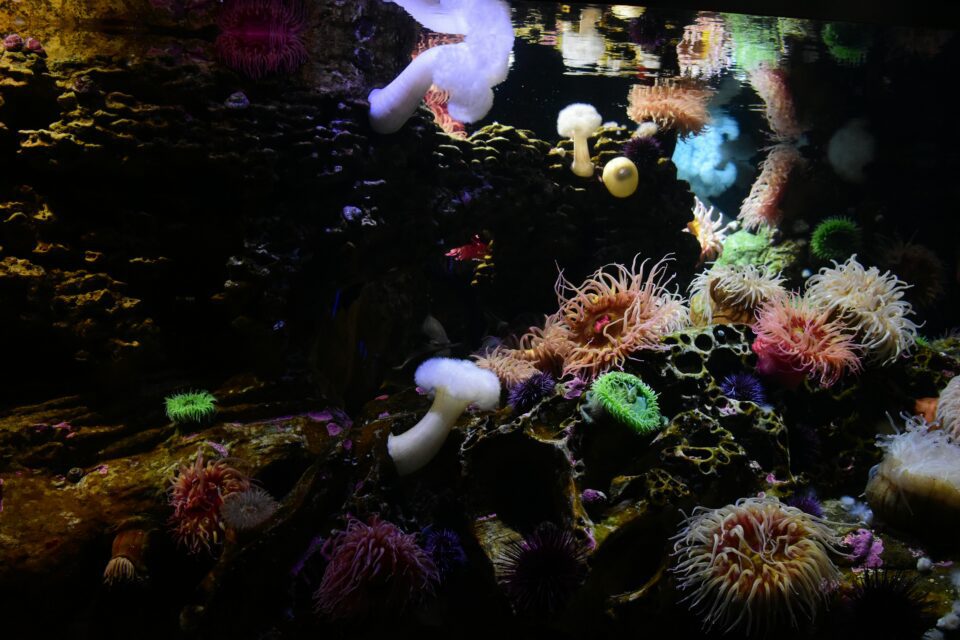
Introduction to Zoanthids Zoanthids, often referred to as zoas, are a popular choice among marine aquarists due to their vibrant colors and patterns. These corals belong to the order Zoantharia and are known for their ease of care, making them ideal for both novice and experienced reef tank enthusiasts.
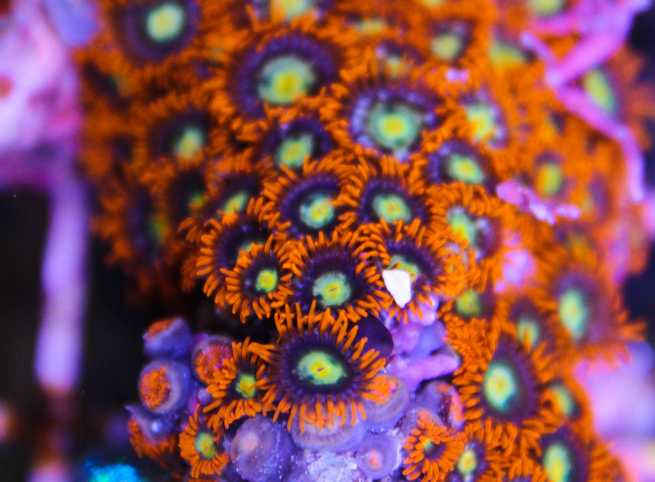
Understanding Zoanthids Zoanthids are colonial animals, consisting of multiple individual polyps connected by a mat-like structure called a coenenchyme. Each polyp has a mouth surrounded by tentacles used for feeding. Their color range is vast, from neon greens to deep purples, often with contrasting centers, or “eyes.”
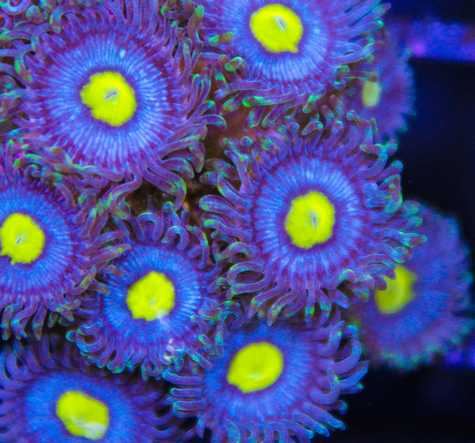
Ideal Aquarium Conditions
- Lighting: Ideal lighting for Zoanthids varies from moderate to intense, with PAR levels between 100 and 250. They can thrive under both T5 fluorescent and LED lighting. The spectrum is also crucial, with many aquarists favoring a mix of blue and white light to enhance color vibrancy. Blue light, particularly in the 420-460 nm range, tends to bring out the fluorescent pigments in Zoanthids.
- Water Flow: They prefer moderate water flow, which helps keep the polyps free of debris and aids in feeding. If your polyps are shrunken it can be a sign of too much flow.
- Water Quality: Stable water parameters are crucial.
- Salinity: Should be kept between 1.025 and 1.026 specific gravity.
- Temperature: Consistently between 76-82°F (24-28°C).
- pH: Maintaining a pH of 8.1 to 8.4 helps ensure a stable environment.
- Alkalinity: Aim for 8-12 dKH to support overall health and calcification.
- Calcium and Magnesium: Essential for cellular function and overall health, maintain calcium levels at 380-450 ppm and magnesium between 1250-1350 ppm.

Placement in the Tank Positioning is key for zoanthid health. They should be placed according to their light and flow needs, which can vary between different varieties. Generally, they do well in mid to high levels in the tank where they receive the appropriate amount of light and flow. Usually start your zoa frag somewhere a bit lower in light and flow, and gradually move them to their final spot to acclimate them.

Popular Zoanthid Varieties There are many zoanthid varieties, each with unique color patterns and names like ‘Utter Chaos’, ‘Rasta’, and ‘Purple Monster’. These varieties can vary in price and rarity, with some sought after for their unique appearances.

Feeding Zoanthids Zoanthids can photosynthesize through their symbiotic algae, zooxanthellae, but benefit greatly from supplemental feeding. They can consume small particulate foods, like phytoplankton, zooplankton, or coral-specific foods, which can enhance their growth and coloration. We recommend coral food such as Benepets and amino acids like Red Sea’s AB+ for ideal growth and colors.

Propagation: Fragging Zoanthids Zoanthids are easily propagated through fragging. This involves carefully cutting the mat between polyps and attaching the frags to new surfaces. This practice not only helps in controlling colony size but also in sharing and trading corals within the hobbyist community. Be careful though, Zoanthids are toxic and breathing in the chemicals produced by fragging can be very dangerous. Always frag with proper ventilation and protective gear.
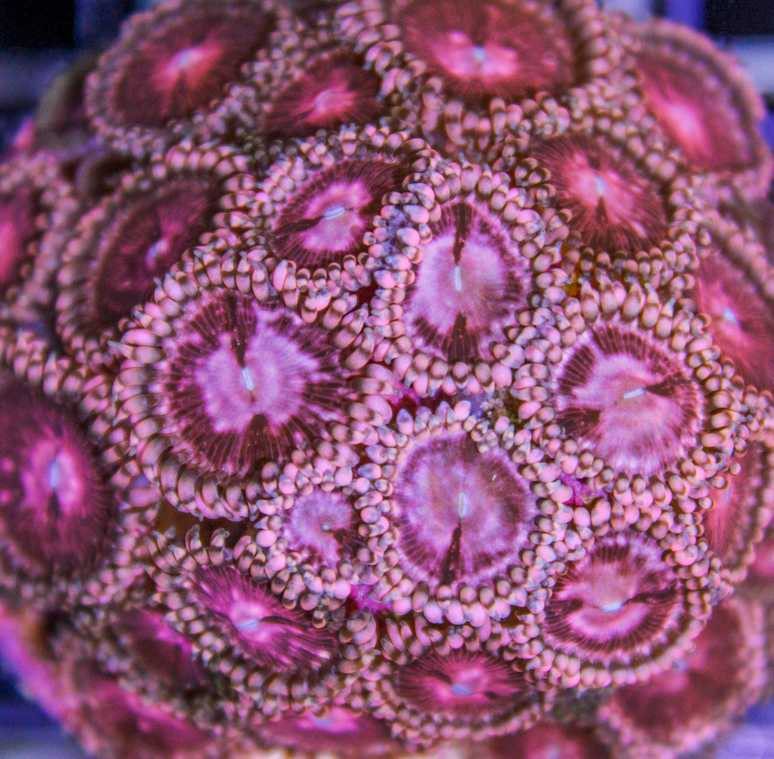
Dealing with Pests and Diseases Pests like zoanthid eating nudibranchs and flatworms can be a challenge. Quarantine new corals before introducing them to the main tank and use dips to treat infested corals. Maintaining good water quality and regular tank inspections can prevent many common issues. Pest eating fish like damsels, wrasses and others can help keep any pest infestations at bay as well.
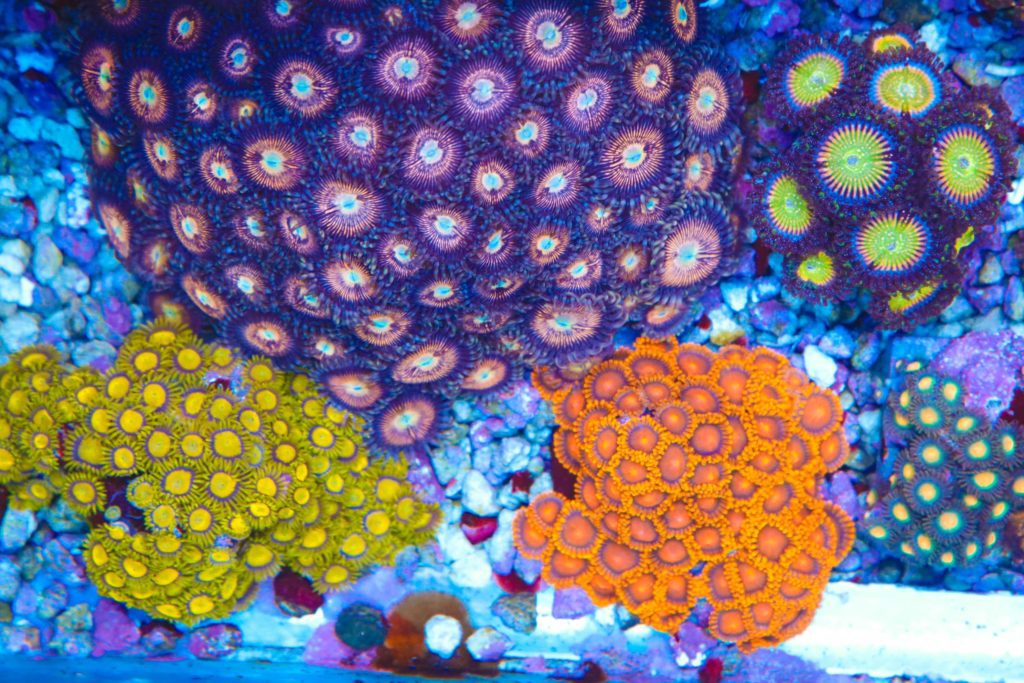
Where to Buy Zoanthids For quality and variety, purchasing zoanthids from reputable dealers like Artistic Oceans is recommended. They offer a wide range of zoanthids, from common to rare species, ensuring healthy specimens for your aquarium.
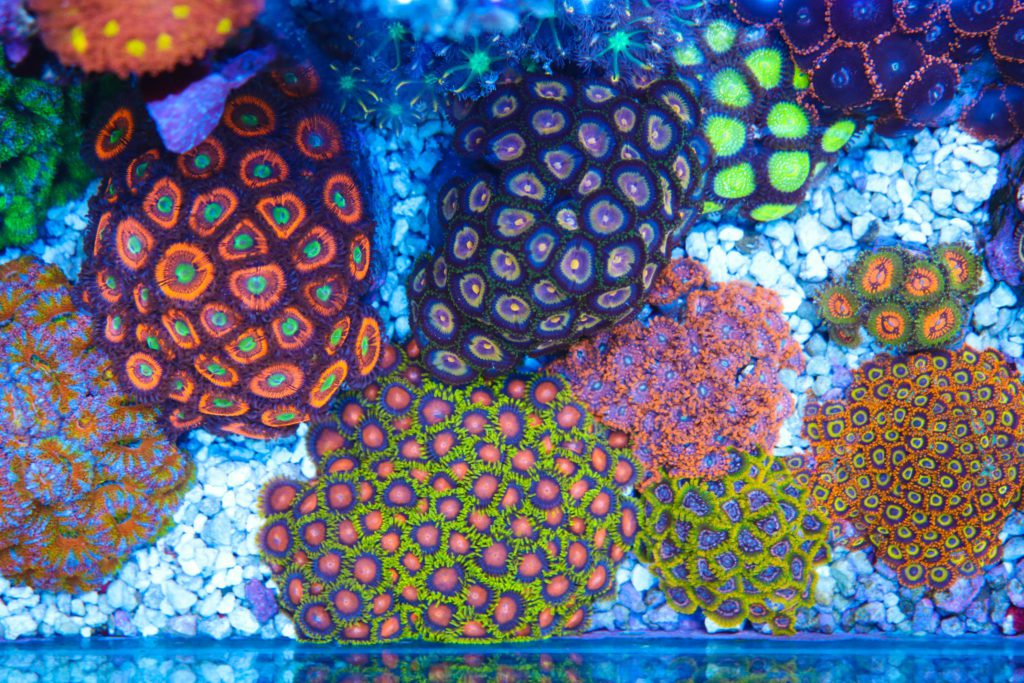
Conclusion Zoanthids are a diverse and colorful addition to any reef tank, offering a variety of shapes and colors. With proper care, ideal lighting and water conditions, appropriate feeding, and regular maintenance, they can be a sustainable and thriving part of the marine ecosystem in your aquarium.
This guide aims to provide a comprehensive overview of zoanthid care, from basic requirements to advanced tips, helping enthusiasts to successfully keep these beautiful corals in their home aquariums.


